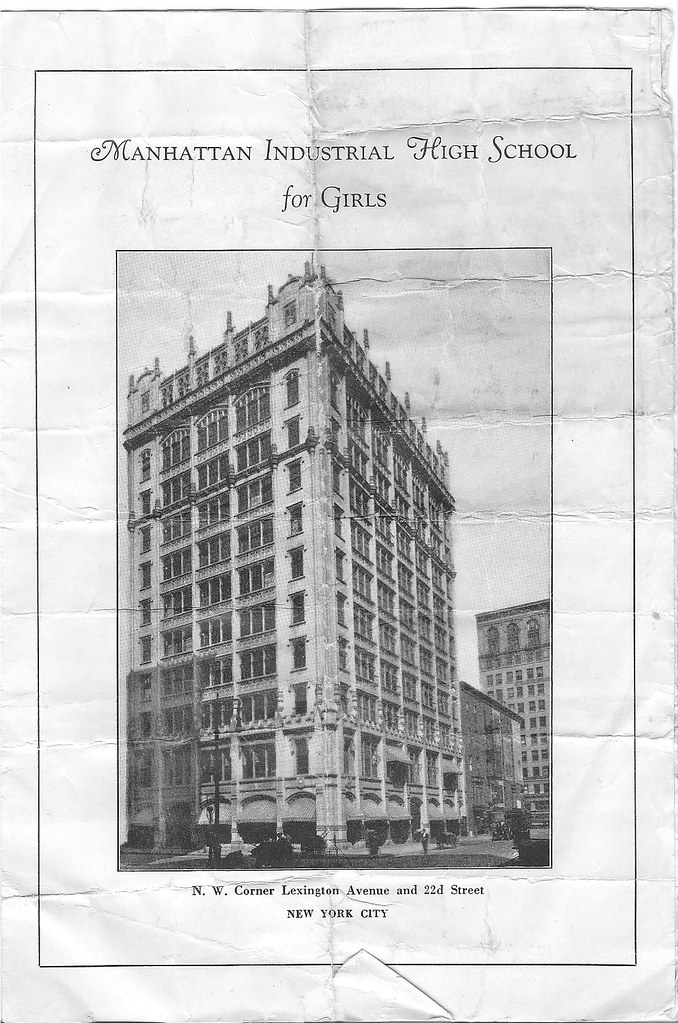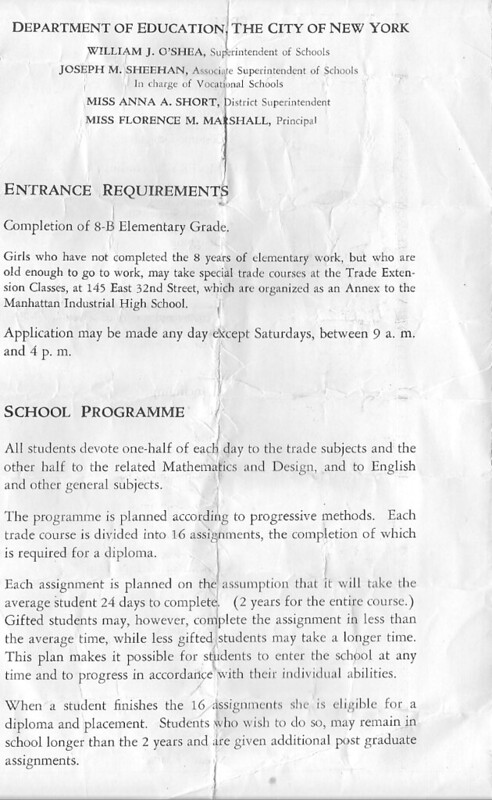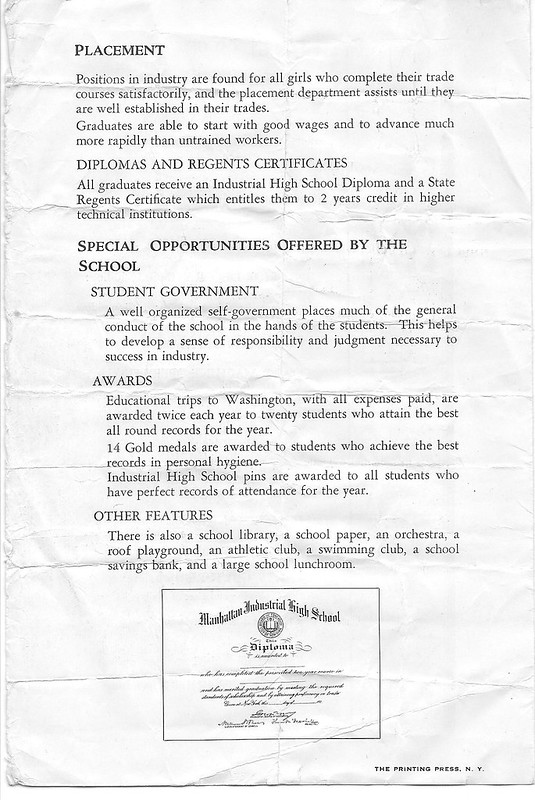
What you see above is the front page of an old promotional brochure for Manhattan Industrial High School. That's the same school as the Manhattan Trade School for Girls -- the school changed its name around 1930. The brochure was found by Jane Montalto, whose mother, Florence Gattuso, attended Manhattan Trade from 1929 through 1931 (her report card is part of my collection). Jane, who I met and interviewed a few months ago, recently found the brochure while going through some of her mother's old papers and was nice enough to scan it for me.
I've never seen any of the school's promotional materials before, so this is an exciting find. There's no date on the brochure, but a few clues (including the name that the school was using at the time) suggest that it's probably from the 1932 to 1935 range. Interestingly, that means Florence obtained the brochure after she had already graduated from the school. Perhaps she was planning to share it with a friend or relative..?
Here are the remaining panels from the brochure (for each of them, you can click to enlarge):



The brochure confirms some things I already knew but also has some information that's new to me and some intriguing tidbits. A few thoughts:
• The building shown on the cover, at the northwest corner of Lexington Ave. and 22nd St., still stands today and is now a high school, although the original "Manhattan Trade School for Girls" lettering is still chiseled into the façade. (For more historical background on this building and Manhattan Trade's previous locations, check out the third Permanent Record article from the Slate series.)
• I knew that most girls attended Manhattan Trade after completing the eighth grade. I didn't realize until now, however, that the completion of eighth grade was a prerequisite.
• Fascinating to see the line, "The programme is planned according to progressive methods." I'd love to know what that meant in the context of the early 1930s.
• "Each trade course is divided into 16 assignments." This explains why each report card shows grades for 16 units.
• During the school's early years -- 1902 up through at least the early 1920s -- the trade offerings were dressmaking, sewing machine operation, millinery, lampshade making, decorative box making, and catalog sample mounting. The first three of these, which were the most popular, were called the needle trades; the latter three, the glue trades. But as you can see in the brochure, things had begun to change by the 1930s: The glue trades had all been folded into a larger trade course called Interior Decorating, and new courses of study had been added -- Flower Making (I had no idea the school had ever offered this), Beauty Culture, and Cafeteria Training. It's fascinating to see how the curriculum evolved to keep pace with the women's labor market.
• The mention of "Educational trips to Washington" matches up with notes I found in some of the girls' files ("Thank you so much for recommending me for the Washington trip," that type of thing).
• Very impressive that the school had its own savings bank. This is very much in keeping with the school's mission to teach girls how to survive in the world of work and business.
An amazing document, and a huge addition to our knowledge base regarding the school. Thanks so much to Jane Montalto for sharing it.

LOVELY brochure! It's interesting that you're trying to date it by the name of the school. You should also scrutinze the fashions. If it's the 30s, it's definitely on the early side with those simple shift-like blouses / dresses. Also note that they give instruction in Marcelling. I've always thought of those kinds of hair waves as more a 20s style, but I guess like most styles, they endured past their peak popularity.
ReplyDelete-- Lianne